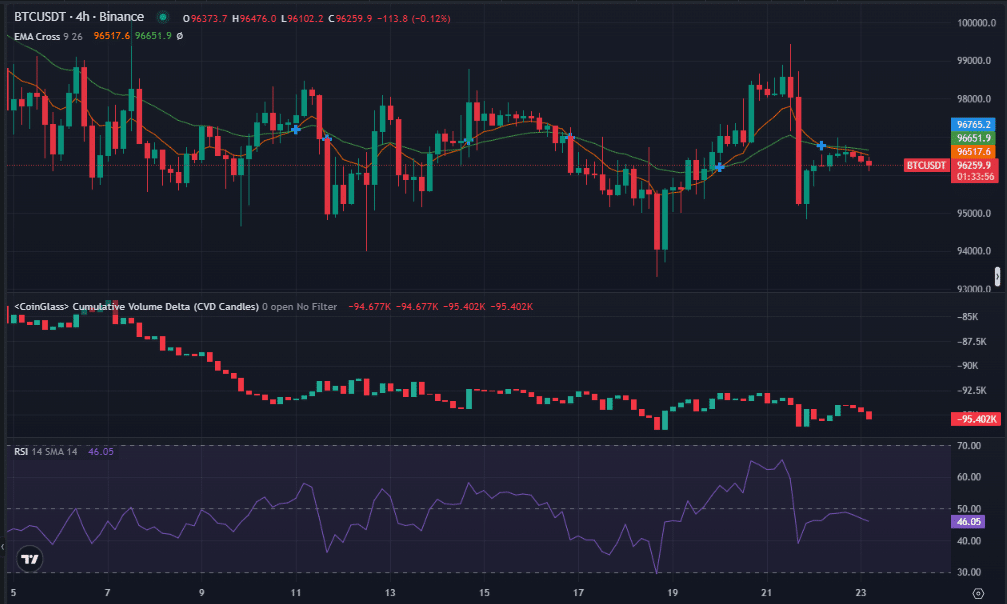Bitcoin unexpectedly dropped to $95,200 last night, inflicting significant losses on short-term holders, likely due to panic selling triggered by news of the Bybit hack.
Over the past 16 hours, Bitcoin’s 4-hour chart on Binance has shown notable bearish signals. The Exponential Moving Averages (EMA) are crossing downward, with the 9-EMA falling below the 26-EMA, indicating short-term bearish momentum.
This aligns with BTC’s price drop to $95,200. Meanwhile, the Relative Strength Index (RSI) stands at 46.05, reflecting a neutral but slightly pessimistic outlook. This level suggests Bitcoin remains in a consolidation phase, neither overbought nor oversold. A rebound above 50 could signal renewed bullish sentiment, supporting a price recovery. Additionally, the Cumulative Volume Delta (CVD) shows a delta volume of -94.67K, indicating strong selling pressure over the past eight hours.
These indicators collectively point to a capitulation event, with short-term holders offloading BTC—potentially forming a local bottom as selling pressure diminishes.

The Short-Term Holder Net Realized Profit/Loss chart across exchanges over the past 24 hours further highlights substantial losses. A dominance of red bars, peaking at -43.9K BTC, indicates panic selling in the $90,000–$95,000 range following the Bybit hack.
Moreover, the Short-Term Holder Profitability Line remains at minimal levels, reinforcing the fact that few short-term traders are realizing profits. A similar trend was observed in early 2022, where significant realized losses preceded a short-term price recovery.
This data suggests the potential emergence of a local bottom, as capitulation events often exhaust downward momentum, creating buying opportunities for traders.
Analyzing the 90-Day Active Supply chart for BTC from 2012 to 2025 reveals a notable decline in recent months. As of early 2025, active supply hovers around 4 million BTC—down from 6 million at the end of 2024.
This indicator reflects a decline in trading activity. Typically, an increase in active supply signals higher demand and bullish sentiment, while a decrease suggests distribution and waning interest. The current trend implies that most short-term holders have already exited, potentially reducing selling pressure. This pattern mirrors 2018, when a decline in active supply preceded price stabilization—further supporting the capitulation hypothesis and short-term bottom formation.






